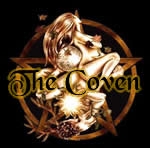The Meaning of Witchcraft by GERALD GARDNER
Part 2
Part 2

I am not the first to have pointed this out; Eliphas Levi, the celebrated French occultist, who was also a devote Catholic, stated in his book, Dogme et Rituel de la Haute Magie, that the first condition of success in the practice of black magic was to be prepared to profane the cultus in which we believed.
Some may hold that anyone who does not believe in Transubstantiation is lacking in the True Faith and doomed to Hell. I am told that certain Nonconformist ministers preaching against Transubstantiation obtained consecrated Hosts and held them up to mockery in the pulpit; but I have never heard that this made them witches.
What about the Christian people who carry such consecrated Hosts about in lockets as personal charms? Are they being reverent or not? And are they witches? We have some of these charms in this Museum.) I know very well that some people would be shocked at this practice, but this does not alter the fact that it is done.
The point which those writers who persistently link the witch cult with the Black Mass fail to appreciate is that they can either maintain that witches are pagans, or that they celebrate Black Masses; but that in the name of logic and common sense they cannot have it both ways.
Unlike a number of sensational writers, I do not wish to convey the impression that there are witches at work in every corner of the land. On the contrary, there are very few real witches left, and those keep themselves very much to themselves. They are generally the descendants of witch families, and have inherited a tradition, which has been preserved for generations. This is, indeed, the traditional way in which witchcraft was spread and preserved; the children of witch families were taught by their parents, and initiated at an early age. In fact, this is very probably the origin of all those frightful stories of the witches bringing babies to the Sabbat to eat them; what really happened was that witch parents dared not omit to have their babies baptized, for fear of instantly arousing suspicion, so they used to bring the babies to the Sabbat first, and present them in dedication to the Old Gods. Then, they felt, it wouldn’t matter if a ceremony of Christian baptism was later gone through “for show.” (“When I bow my head in the house of Rimmon, the Lord pardon Thy servant in this thing.”) However, as the persecution of the Old Religion grew more fiercer, it became dangerous to admit children. Innocent children prattled among themselves about where their parents went and what they did, and one unlucky word overheard by the wrong person might have meant death to the whole family. There are terrible records of children being hanged or burned with their parents, merely because they were of the witch blood. Margaret Ine Quane, for instance, who was burned as a witch here in Castletown in 1617, had her young son burned with her, simply because he was her son. Hence the custom of initiating the children was less and less observed, and this, coupled with the wholesale extermination policy carried on at the Church’s instigation, soon greatly reduced the numbers of the cult.
However, there is one factor in the continuity of the tradition which the opponents of the cult had not reckoned with. The witches are firm believers in reincarnation, and they say that “Once a witch, always a witch.” They believe that people who have been initiated into the cult, and have really accepted the Old Religion and the Old Gods in their hearts, will return to it or have an urge towards it in life after life, even though they may have no conscious knowledge of their previous associations with it. There may be something in this; because I know personally of three people in one coven who discovered that, subsequent to their coming into the cult in this life, their ancestors had had links with it, and I have already mentioned the witches who “recommended” me.
Of course, witch rites today are somewhat different from what they used to be many centuries ago. Then the great meetings, called Sabbats, used to be attended by large numbers of the population, who arrived provided with the wherewithal to cook a meal for themselves (hence the “hellish Sabbat fires” we have heard so much about), and prepared to spend a night on the heath in merrymaking, once the more serious rites were over. In fact, most traditional country merrymakings have some connection with the Old Religion; the Puritan Stubbes, in his Anatomie of Abuses, fiercely denounces the people who stayed out all night in the woods “Maying” on the old Sabbat date of May Eve; and Christina Hole, in her English Folklore, notes how the Northamptonshire “guisers”—folk-dancers dressed in fantastic costumes—are called “witch-men” to this day. Such instances might be greatly multiplied.
The English climate, of course, did not always permit these gatherings to be held on the heath; and I think that in this event they probably took place in someone’s barn, or in the hall of a great house whose owner was friendly to the cult. In the Basque country of Pays de Labourd in 1609 the official investigator from the Parlement of Bordeaux, Pierre de Lancre, was horrified to find that the Sabbat was sometimes held in the local church, apparently with the priest’s consent. He was particularly scandalized to find how many Basque priests sympathized with the Old Religion.2
We are often told horrid tales of witch meetings in churchyards, and of witches who, in the words of Robert Burns, “in kirkyards renew their leagues owre howkit dead.” But in the old times the churchyard was the regular place for village merrymakings. In those days a churchyard was not, as it is today, a place of gravestones, but simply a green sward. From M. C. Anderson’s Looking for History in British Churches3 we may see that dancing in the churchyard was quite feasible in the old days as the author says that it was not the practice to erect gravestones to those who were buried there. “The great folks were buried beneath sculptured tombs within the church. . . . The little people remained anonymous in death
before the 17th century.”
__________________________
2. De Lancre, Tableau de L’Inconstance des Mauvais, Paris, 1612.
3. John Murray, 1951.









































No comments:
Post a Comment